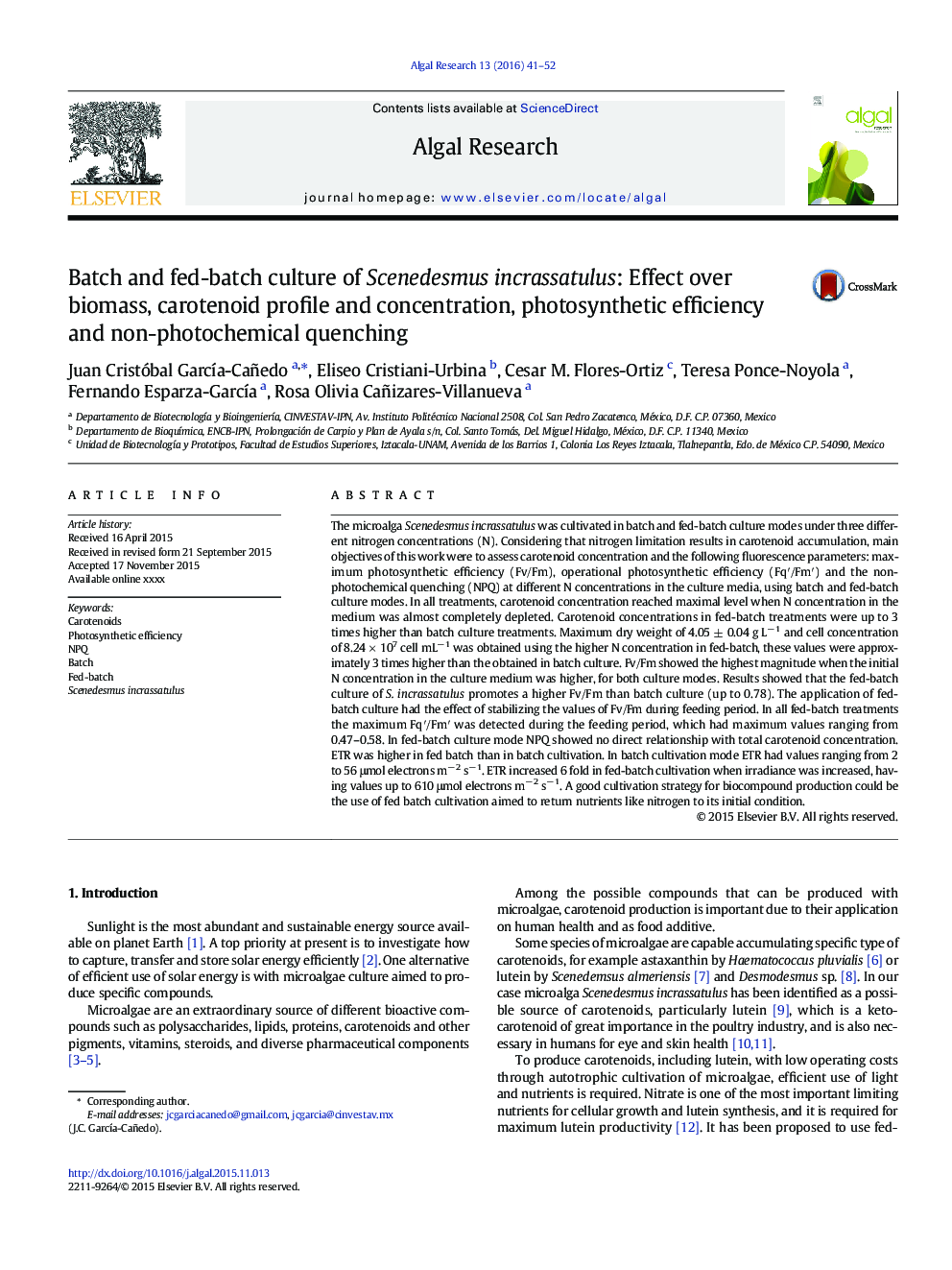| Article ID | Journal | Published Year | Pages | File Type |
|---|---|---|---|---|
| 8087413 | Algal Research | 2016 | 12 Pages |
Abstract
The microalga Scenedesmus incrassatulus was cultivated in batch and fed-batch culture modes under three different nitrogen concentrations (N). Considering that nitrogen limitation results in carotenoid accumulation, main objectives of this work were to assess carotenoid concentration and the following fluorescence parameters: maximum photosynthetic efficiency (Fv/Fm), operational photosynthetic efficiency (Fqâ²/Fmâ²) and the non-photochemical quenching (NPQ) at different N concentrations in the culture media, using batch and fed-batch culture modes. In all treatments, carotenoid concentration reached maximal level when N concentration in the medium was almost completely depleted. Carotenoid concentrations in fed-batch treatments were up to 3 times higher than batch culture treatments. Maximum dry weight of 4.05 ± 0.04 g Lâ 1 and cell concentration of 8.24 Ã 107 cell mLâ 1 was obtained using the higher N concentration in fed-batch, these values were approximately 3 times higher than the obtained in batch culture. Fv/Fm showed the highest magnitude when the initial N concentration in the culture medium was higher, for both culture modes. Results showed that the fed-batch culture of S. incrassatulus promotes a higher Fv/Fm than batch culture (up to 0.78). The application of fed-batch culture had the effect of stabilizing the values of Fv/Fm during feeding period. In all fed-batch treatments the maximum Fqâ²/Fmâ² was detected during the feeding period, which had maximum values ranging from 0.47-0.58. In fed-batch culture mode NPQ showed no direct relationship with total carotenoid concentration. ETR was higher in fed batch than in batch cultivation. In batch cultivation mode ETR had values ranging from 2 to 56 μmol electrons mâ 2 sâ 1. ETR increased 6 fold in fed-batch cultivation when irradiance was increased, having values up to 610 μmol electrons mâ 2 sâ 1. A good cultivation strategy for biocompound production could be the use of fed batch cultivation aimed to return nutrients like nitrogen to its initial condition.
Related Topics
Physical Sciences and Engineering
Energy
Renewable Energy, Sustainability and the Environment
Authors
Juan Cristóbal GarcÃa-Cañedo, Eliseo Cristiani-Urbina, Cesar M. Flores-Ortiz, Teresa Ponce-Noyola, Fernando Esparza-GarcÃa, Rosa Olivia Cañizares-Villanueva,
